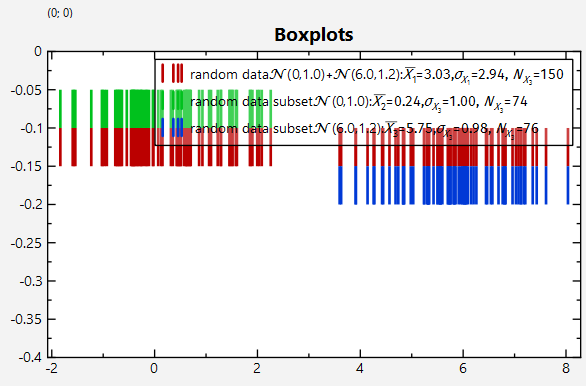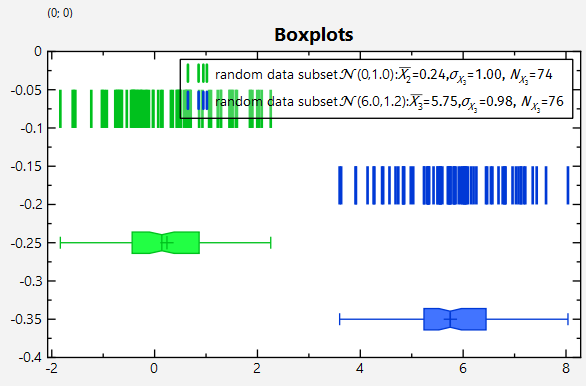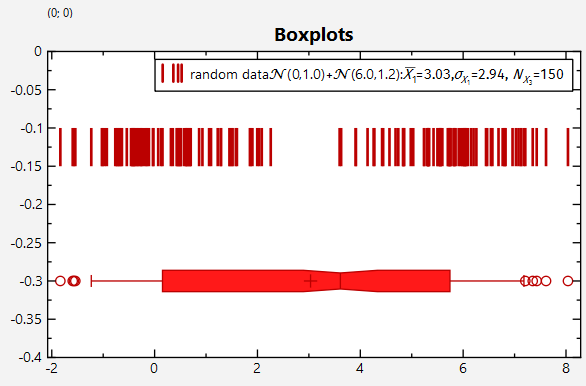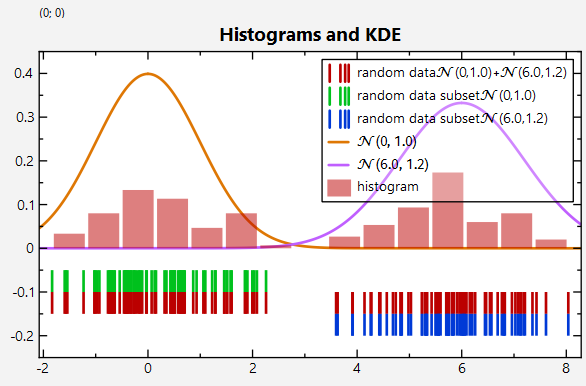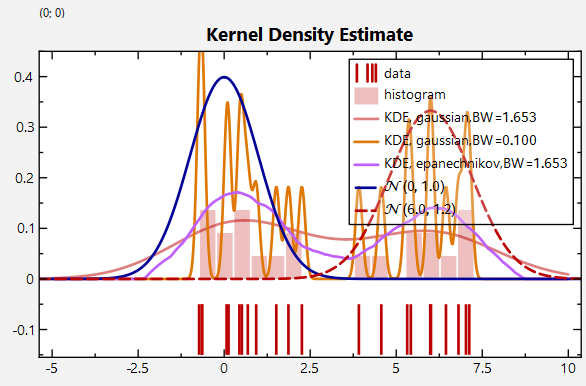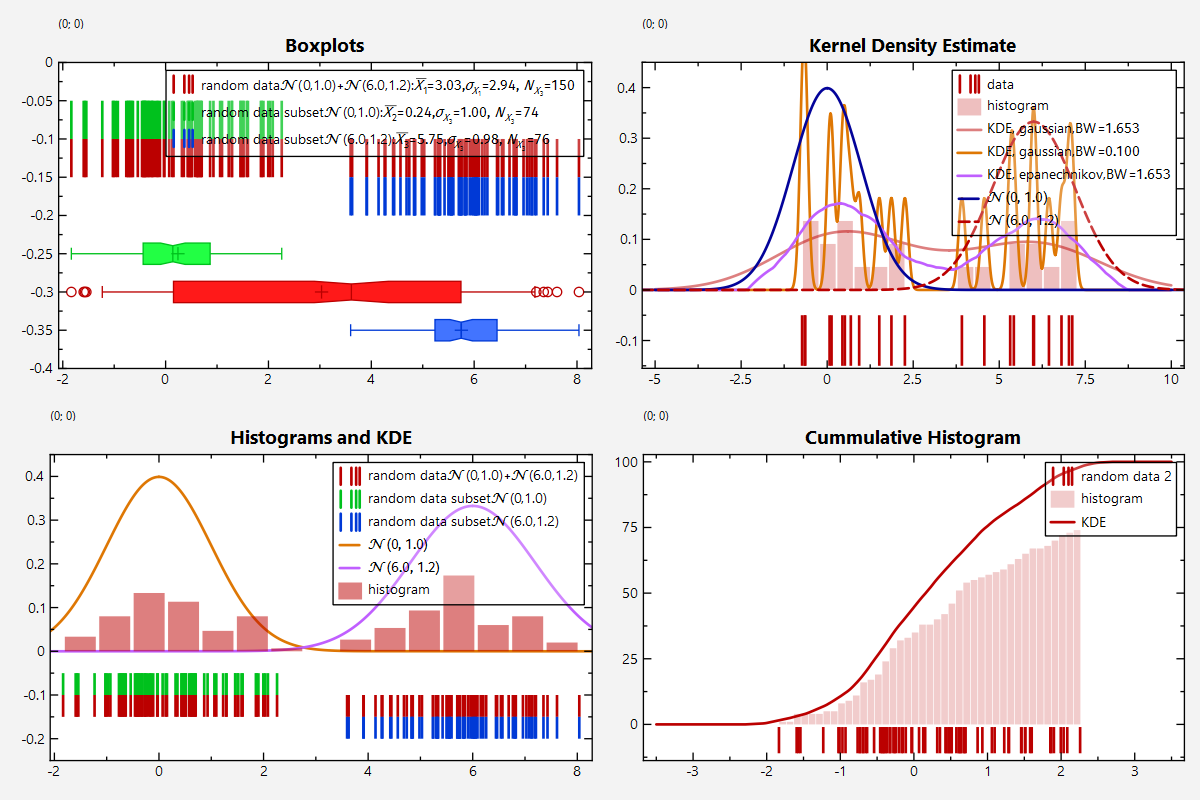|
|
||
|---|---|---|
| .. | ||
| CMakeLists.txt | ||
| datastore_statistics_and_lib.pro | ||
| datastore_statistics.cpp | ||
| datastore_statistics.pro | ||
| README.md | ||
Tutorial (JKQTPDatastore): Advanced 1-Dimensional Statistics with JKQTPDatastore
[JKQTPlotterBasicJKQTPDatastore]: @ref JKQTPlotterBasicJKQTPDatastore "Basic Usage of JKQTPDatastore" [JKQTPlotterBasicJKQTPDatastoreIterators]: @ref JKQTPlotterBasicJKQTPDatastoreIterators "Iterator-Based usage of JKQTPDatastore" [JKQTPlotterBasicJKQTPDatastoreStatistics]: @ref JKQTPlotterBasicJKQTPDatastoreStatistics "Advanced 1-Dimensional Statistics with JKQTPDatastore" [JKQTPlotterBasicJKQTPDatastoreRegression]: @ref JKQTPlotterBasicJKQTPDatastoreRegression "Regression Analysis (with the Statistics Library)" [JKQTPlotterBasicJKQTPDatastoreStatisticsGroupedStat]: @ref JKQTPlotterBasicJKQTPDatastoreStatisticsGroupedStat "1-Dimensional Group Statistics with JKQTPDatastore" [JKQTPlotterBasicJKQTPDatastoreStatistics2D]: @ref JKQTPlotterBasicJKQTPDatastoreStatistics2D "Advanced 2-Dimensional Statistics with JKQTPDatastore" [statisticslibrary]: @ref jkqtptools_math_statistics "JKQTPlotter Statistics Library"
This tutorial project (see ./examples/datastore_statistics/) explains several advanced functions of JKQTPDatastore in combination with the statisticslibrary conatined in JKQTPlotter.
Note that there are additional tutorial explaining other aspects of data mangement in JKQTPDatastore:
- [JKQTPlotterBasicJKQTPDatastore]
- [JKQTPlotterBasicJKQTPDatastoreIterators]
- [JKQTPlotterBasicJKQTPDatastoreStatistics]
- [JKQTPlotterBasicJKQTPDatastoreRegression]
- [JKQTPlotterBasicJKQTPDatastoreStatisticsGroupedStat]
- [JKQTPlotterBasicJKQTPDatastoreStatistics2D]
[TOC]
The source code of the main application can be found in datastore_statistics.cpp.
This tutorial cites only parts of this code to demonstrate different ways of working with data for the graphs.
Generating different sets of random numbers
The code segments below will fill four instances of JKQTPlotter with different statistical plots. All these plots are based on three sets of random numbers generated as shown here:
size_t randomdatacol1=datastore1->addColumn("random data 1");
size_t randomdatacol2=datastore1->addColumn("random data 2");
size_t randomdatacol3=datastore1->addColumn("random data 3");
std::random_device rd; // random number generators:
std::mt19937 gen{rd()};
std::uniform_int_distribution<> ddecide(0,1);
std::normal_distribution<> d1{0,1};
std::normal_distribution<> d2{6,1.2};
for (size_t i=0; i<150; i++) {
double v=0;
const int decide=ddecide(gen);
if (decide==0) v=d1(gen);
else v=d2(gen);
datastore1->appendToColumn(randomdatacol1, v);
if (decide==0) datastore1->appendToColumn(randomdatacol2, v);
else datastore1->appendToColumn(randomdatacol3, v);
}
The column randomdatacol1 will contain 150 random numbers. Each one is drawn either from a normal dirstribution N(0,1) (d1) or N(6,1.2) (d2). the decision, which of the two to use is based on the result of a third random distribution ddecide, which only returns 0 or 1. The two columns randomdatacol2 and randomdatacol3 only collect the random numbers drawn from d1 or d2 respectively.
The three columns are generated empyt by calling JKQTPDatastore::addColumn() with only a name. Then the actual values are added by calling JKQTPDatastore::appendToColumn().
Basic Statistics
The three sets of random numbers from above can be visualized e.g. by a JKQTPPeakStreamGraph graph with code as follows:
JKQTPPeakStreamGraph* gData1;
plot1box->addGraph(gData1=new JKQTPPeakStreamGraph(plot1box));
gData1->setDataColumn(randomdatacol1);
gData1->setBaseline(-0.1);
gData1->setPeakHeight(-0.05);
gData1->setDrawBaseline(false);
This (if repeated for all three columns) results in a plot like this:
Based on the raw data we can now use JKQTPlotter's [statisticslibrary] to calculate some basic properties, like the average (jkqtpstatAverage()) or the standard deviation (jkqtpstatStdDev()):
size_t N=0;
double mean=jkqtpstatAverage(datastore1->begin(randomdatacol1), datastore1->end(randomdatacol1), &N);
double std=jkqtpstatStdDev(datastore1->begin(randomdatacol1), datastore1->end(randomdatacol1));
Both statistics functions (the same as all statistics functions in the library) use an iterator-based interface, comparable to the interface of the algorithms in the C++ standard template library. To this end, the class JKQTPDatastore provides an iterator interface to its columns, using the functions JKQTPDatastore::begin() and JKQTPDatastore::end(). Both functions simply receive the column ID as parameter and exist in a const and a mutable variant. the latter allows to also edit the data. In addition the function JKQTPDatastore::backInserter() returns a back-inserter iterator (like generated for STL containers with std::back_inserter(container)) that also allows to append to the column.
note that the iterator interface allows to use these functions with any container that provides such iterators (e.g. std::vector<double>, std::list<int>, std::set<float>, QVector<double>...).
The output of these functions is shown in the image above in the plot legend/key.
Of course, several other functions exist that calculate basic statistics from a column, e.g.:
- average/mean:
jkqtpstatAverage(),jkqtpstatWeightedAverage() - number of usable values in a range:
jkqtpstatCount() - minimum/maximum:
jkqtpstatMinMax(),jkqtpstatMin(),jkqtpstatMax() - sum:
jkqtpstatSum() - variance:
jkqtpstatVariance(),jkqtpstatWeightedVariance() - standard deviation:
jkqtpstatStdDev(),jkqtpstatWeightedStdDev() - skewnes
jkqtpstatSkewness() - statistical moments:
jkqtpstatCentralMoment(),jkqtpstatMoment() - correlation coefficients:
jkqtpstatCorrelationCoefficient() - median:
jkqtpstatMedian() - quantile:
jkqtpstatQuantile() - (N)MAD:
jkqtpstatMAD(),jkqtpstatNMAD() - 5-Number Summary (e.g. for boxplots):
jkqtpstat5NumberStatistics(),jkqtpstat5NumberStatisticsAndOutliers(),jkqtpstat5NumberStatisticsOfSortedVector(),jkqtpstat5NumberStatisticsAndOutliersOfSortedVector()
All these functions use all values in the given range and convert each value to a double, using jkqtp_todouble(). The return values is always a dohble. Therefore you can use these functions to calculate statistics of ranges of any type that can be converted to double. Values that do not result in a valid doubleare not used in calculating the statistics. Therefore you can exclude values by setting them JKQTP_DOUBLE_NAN (i.e. "not a number").
Boxplots
Standard Boxplots
As mentioned above and shown in several other examples, JKQTPlotter supports Boxplots with the classes JKQTPBoxplotHorizontalElement, JKQTPBoxplotVerticalElement, as well as JKQTPBoxplotHorizontal and JKQTPBoxplotVertical. You can then use the 5-Number Summray functions from the [statisticslibrary] to calculate the data for such a boxplot (e.g. jkqtpstat5NumberStatistics()) and set it up by hand. Code would look roughly like this:
JKQTPStat5NumberStatistics stat=jkqtpstat5NumberStatistics(data.begin(), data.end(), 0.25, .5);
JKQTPBoxplotVerticalElement* res=new JKQTPBoxplotVerticalElement(plotter);
res->setMin(stat.minimum);
res->setMax(stat.maximum);
res->setMedian(stat.median);
res->setMean(jkqtpstatAverage(first, last));
res->setPercentile25(stat.quantile1);
res->setPercentile75(stat.quantile2);
res->setMedianConfidenceIntervalWidth(stat.IQRSignificanceEstimate());
res->setDrawMean(true);
res->setDrawNotch(true);
res->setDrawMedian(true);
res->setDrawMinMax(true);
res->setDrawBox(true);
res->setPos(boxposX);
plotter->addGraph(res);
In order to save you the work of writing out this code, the [statisticslibrary] provides "adaptors", such as jkqtpstatAddVBoxplot(), which basically implements the code above. Then drawing a boxplot is reduced to:
JKQTPBoxplotHorizontalElement* gBox2=jkqtpstatAddHBoxplot(plot1box->getPlotter(), datastore1->begin(randomdatacol2), datastore1->end(randomdatacol2), -0.25);
gBox2->setColor(gData2->getKeyLabelColor());
gBox2->setBoxWidthAbsolute(16);
Here -0.25indicates the location (on the y-axis) of the boxplot. and the plot is calculated for the data in the JKQTPDatastore column randomdatacol2.
Boxplots with Outliers
Usually the boxplot draws its whiskers at the minimum and maximum value of the dataset. But if your data contains a lot of outliers, it may make sense to draw them e.g. at the 3% and 97% quantiles and the draw the outliers as additional data points. This can also be done with jkqtpstat5NumberStatistics(), as you can specify the minimum and maximum quantile (default is 0 and 1, i.e. the true minimum and maximum) and the resulting object contains a vector with the outlier values. Then you could add them to the JKQTPDatastore and add a scatter plot that displays them. Also this task is sped up by an "adaptor". Simply call
std::pair<JKQTPBoxplotHorizontalElement*,JKQTPSingleColumnSymbolsGraph*> gBox1;
gBox1=jkqtpstatAddHBoxplotAndOutliers(plot1box->getPlotter(), datastore1->begin(randomdatacol1), datastore1->end(randomdatacol1), -0.3,
0.25, 0.75, // 1. and 3. Quartile for the boxplot box
0.03, 0.97 // Quantiles for the boxplot box whiskers' ends
);
As you can see this restuns the JKQTPBoxplotHorizontalElement and in addition a JKQTPSingleColumnSymbolsGraph for the display of the outliers. The result looks like this:
Histograms
Calculating 1D-Histograms is supported by several functions from the [statisticslibrary], e.g. jkqtpstatHistogram1DAutoranged(). You can use the result to fill new columns in a JKQTPDatastore, which can then be used to draw the histogram (here wit 15 bins, spanning the full data range):
size_t histcolX=plotter->getDatastore()->addColumn(histogramcolumnBaseName+", bins");
size_t histcolY=plotter->getDatastore()->addColumn(histogramcolumnBaseName+", values");
jkqtpstatHistogram1DAutoranged(first, last, plotter->getDatastore()->backInserter(histcolX), plotter->getDatastore()->backInserter(histcolY), 15);
JKQTPBarVerticalGraph* resO=new JKQTPBarVerticalGraph(plotter);
resO->setXColumn(histcolX);
resO->setYColumn(histcolY);
resO->setTitle(histogramcolumnBaseName);
plotter->addGraph(resO);
Again there are "adaptors" which significanty reduce the amount of coude you have to type:
JKQTPBarVerticalGraph* hist1=jkqtpstatAddHHistogram1DAutoranged(plot1->getPlotter(), datastore1->begin(randomdatacol1), datastore1->end(randomdatacol1), 15);
The resulting plot looks like this (the distributions used to generate the random data are also shown as line plots!):
Kernel Density Estimates (KDE)
Especially when only few samples from a distribution are available, histograms are not good at representing the underlying data distribution. In such cases, Kernel Density Estimates (KDE) can help, which are basically a smoothed variant of a histogram. The [statisticslibrary] supports calculating them via e.g. jkqtpstatKDE1D():
size_t kdecolX=plotter->getDatastore()->addColumn(KDEcolumnBaseName+", bins");
size_t kdecolY=plotter->getDatastore()->addColumn(KDEcolumnBaseName+", values");
jkqtpstatKDE1D(first, last, -5.0,0.01,10.0, plotter->getDatastore()->backInserter(kdecolX), plotter->getDatastore()->backInserter(kdecolY), kernel, kdeBandwidth);
JKQTPXYLineGraph* resO=new JKQTPXYLineGraph(plotter);
resO->setXColumn(kdecolX);
resO->setYColumn(kdecolY);
resO->setTitle(KDEcolumnBaseName);
resO->setDrawLine(true);
resO->setSymbolType(JKQTPNoSymbol);
plotter->addGraph(resO);
The function accepts different kernel functions (any C++ functor double f(double x)) and provides a set of default kernels, e.g.
jkqtpstatKernel1DEpanechnikov()jkqtpstatKernel1DGaussian()jkqtpstatKernel1DUniform()- ...
The three parameters -5.0, 0.01, 10.0 tell the function jkqtpstatKDE1D() to evaluate the KDE at positions between -5 and 10, in steps of 0.01.
Finally the bandwidth constrols the smoothing and the [statisticslibrary] provides a simple function to estimate it automatically from the data:
double kdeBandwidth=jkqtpstatEstimateKDEBandwidth(datastore1->begin(randomdatacol1subset), datastore1->end(randomdatacol1subset));
Again a shortcut "adaptor" simplifies this task:
JKQTPXYLineGraph* kde2=jkqtpstatAddHKDE1D(plot1kde->getPlotter(), datastore1->begin(randomdatacol1subset), datastore1->end(randomdatacol1subset),
// evaluate at locations between -5 and 10, in steps of 0.01 (equivalent to the line above, but without pre-calculating a vector)
-5.0,0.01,10.0,
// use a gaussian kernel
&jkqtpstatKernel1DEpanechnikov,
// estimate the bandwidth
kdeBandwidth);
Plots that result from such calls look like this:
Cummulative Histograms and KDEs
Both histograms and KDEs support a parameter bool cummulative, which allows to accumulate the data after calculation and drawing cummulative histograms/KDEs:
JKQTPBarVerticalGraph* histcum2=jkqtpstatAddHHistogram1DAutoranged(plot1cum->getPlotter(), datastore1->begin(randomdatacol2), datastore1->end(randomdatacol2),
// bin width
0.1,
// normalized, cummulative
false, true);
Screenshot of the full Program
The output of the full test program datastore_statistics.cpp looks like this:
